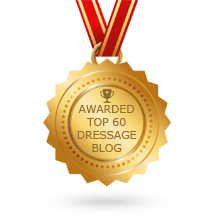 In this blog I’m looking at trot, the most useful pace for training horses. The diagonal pairing of legs in the steps provide equal movement on both sides of the horse (unlike canter) and it has natural impulsion (unlike walk). These gymnastic qualities help to create a horse who supple and balanced, providing the trot is ridden correctly. As with walk and canter, it is important that the rider knows the horse’s natural trot. It is this rhythm that should be used for this horse’s trot, maintained with a level of impulsion appropriate to the horse’s level of training; too little impulsion the horse struggles to maintain the stride, too much power and the horse becomes unbalanced. Once this is established, and the horse can travel around the outer sides of the school without using the reins for support, in a free moving regular and balanced way, other exercises can be introduced. Common faults in trot occur when horses are ridden to fast, where the rider blocks the horse with their hand or legs, or when the horse is collected or extended before they are physically or mentally ready. This can be seen in one or more of the following faults; loss of rhythm, breaking of the diagonal pairs of legs, restricted movement in the horse’s shoulder, stiff hocks, hovering hind leg, rigid back, contracted neck, jogging, weight in the horse’s shoulder. Generally, these can be corrected by returning to the basic trot work and re-establishing the horse’s natural rhythm through improved balance and impulsion. © Training Riders, Transforming Horses |
AuthorDiane Followell Classical Dressage Trainer 
|
Telephone+44 (0)7931551014
|
|
© Diane Followell 2015 -2024.
All Rights Reserved.
All images and content are copyright Diane Followell unless otherwise stated.
All Rights Reserved.
All images and content are copyright Diane Followell unless otherwise stated.

 RSS Feed
RSS Feed

